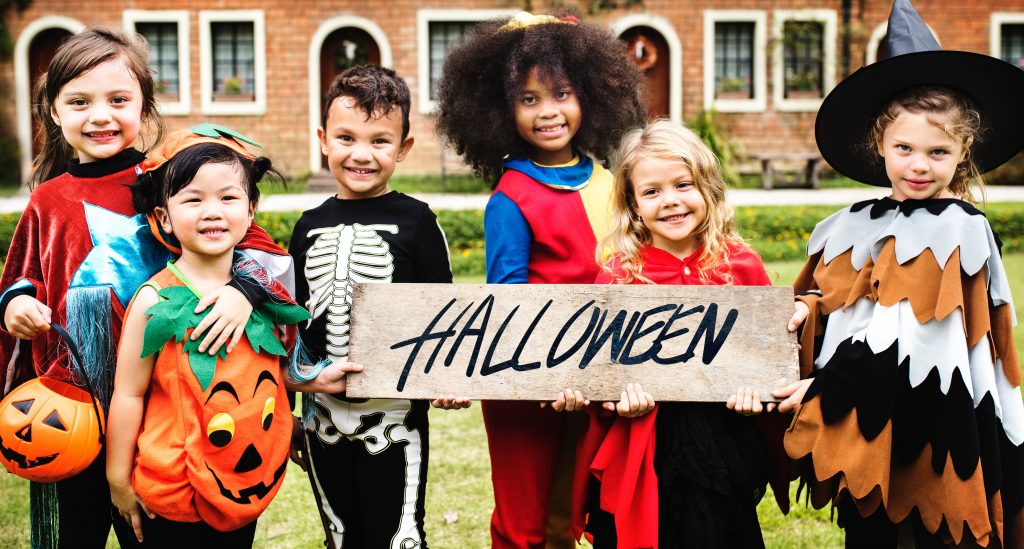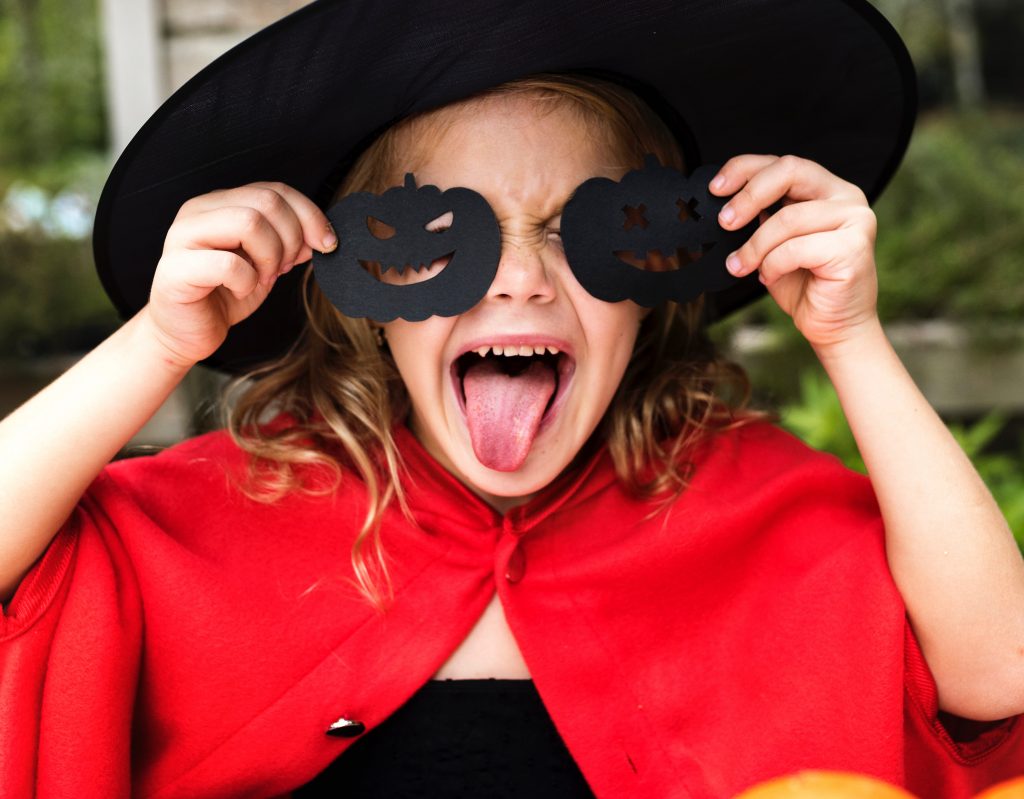BOO! It’s Okay to Be Scared!
The human brain is a marvelous organ that provides life with so many fun experiences, such as happiness, laughter, excitement, motivation, enthusiasm…the list can go on for pages. The downside is that it also provides us with negative experiences like disappointment, anger, frustration, stress, anxiety, depression…unfortunately this list can also become overwhelming. With Halloween approaching I am going to be focusing on one emotion that we develop at a young age. This emotion can be a defense mechanism, it can trigger our fight, flight, or freeze response, it literally is an emotion that has helped us survive and grow over centuries. The emotion I am referring to is Fear, and even though our society does not like to glorify being scared, I’m here to tell you why we in fact need to embrace it.
Having children of my own and watching their brains develop every single day is simply put, astonishing. I feel that with every passing month they are reaching new milestones and developing new emotions. An interesting component to development is watching emotions grow into more mature, stronger emotions. What was once just separation anxiety as a baby has grown into worry and fear in toddlerhood. Fear in children starts developing at infancy around 6-8 months of age when they develop separation anxiety. Around 2 years old a child has a deep rooted understanding of the dependence they have on the love and protection of significant adults, and having this understanding helps strengthen the trust that the toddler already had for their caregivers (Susan A. Miller, Booth Church, & Poole, 2018). When confronted with a scary situation the toddler will turn toward their caregiver for reassurance and comfort.
With Halloween approaching my girls were ready to pick out their own costumes, which was very exciting for us since they are finally at an age to understand what costumes are and that Halloween can be fun! As we walk into the store the first thing that any consumer would notice are the Halloween displays on the floor, walls, and ceiling. Some are just creepy looking masks while others were full animatronic figures making loud noises. For the first time in her toddlerhood my daughter froze and looked up at the animatronic scary man and immediately looked worried and reached for me. She announced that she was scared and buried her head in my shoulder and it was that moment when I realized “Whoa, she’s never said that before. Her fear is so much stronger than it was last year, when did this happen!?” Many parents and individuals know about the developmental milestones of emotions, but how we handle them can be quite different and it is important to be mindful of these emotions in children around holidays such as Halloween.
The Merriam-Webster definition of fear is described as an unpleasant, often strong, emotion caused by anticipation or awareness of danger (Merriam-Webster, 2018). The combination of anxiety and fear resulted in our brains developing our flight or fight (and freeze) responses, which are responsible for our decision making and survival instincts. As adults we know how to rationalize our anxieties and fears to help us assess a situation, but as children our brains are not that fully developed. We can identify the emotions we feel and choose to express those emotions, but we do not know how to rationalize and assess the entire situation that we are experiencing. For example, if you are playing with a child and get up to use the bathroom the second you disappear behind the door the toddler may get upset and cry and yell for you. All they can assess is you are GONE. You walked away and they can no longer see you. They now think you are gone forever and start crying, fearful that you have abandoned them. The second you reemerge they are happy again. Do that again later the same day and they’ll have the same exact response. They simply cannot rationalize at this point in their life that you are just behind a door and will come back out eventually.
Imagine you are trick-or-treating on Halloween night and approach a house with a ghost hanging on the door, but as you get closer it starts moving around and making noises. You may assess that it is a decoration and although you may be startled you need not to run away. A child on the other hand will become startled and soon after realizing they cannot rationalize if this ghost on the door is a threat or not, they become fearful and untrusting of that door. They may run away or seek a caregiver that can provide comfort. The caregiver can then choose to explain to the child what they just experienced and let them know if they should be scared, or not.
This example applies to all holidays and situations that may be similar. I personally like this blurb written by Karen Young (2018) when describing how children assess situations with people in costumes on holidays:
“Soooo lemme get this right – you’re putting me in front of a big man in a red suit with a white beard the likes I’ve never seen before and you want me to sit on his lap? Nope. Not today. Probably not until I’m like, five. Or 72. Or when I figure that out he brings stuff. Then I might get close enough to tell him want I want, or maybe I’ll throw him a letter or something. And I don’t get the point of the big people-sized rabbits that carry baskets of shiny wrapped thin- … actually, wait. No to the rabbit people. Yes to the shiny wrapped things. Just put them where I can reach them and leave. K?”
Have you ever seen a picture of a child sitting on Santa’s lap and crying? This is why. They have no idea how to rationalize what is happening. Here we are, teaching our children “Stranger Danger,” apparently except for holidays. On Halloween we are encouraged to dress in costume and that it is fun to scare people, on Christmas we expect our children to sit on a stranger’s lap and not be anxious about that whatsoever, Easter they meet a bunny the size of a grown man and talks…we need to understand that not every child will love these situations and that fear to them is sometimes harder to comprehend.
It is important to teach children why fear exists and why it is okay to be scared, and also why it is okay to talk to someone about these fears. The talking is what helps them learn to rationalize and it is important that we be the models for that behavior. Telling them, “Don’t be scared” isn’t enough, follow up with WHY they should not be scared. Explain the rationalization. Also make sure to not tell your child to just, “Get over it.” Fear is a real emotion that we all experience and it is perfectly fine to be scared sometimes. We just have to teach our children that it is okay to have these experiences and that we can learn from them. These skills will help immensely when the child grows into an adolescent, and eventually, an adult. Helping them learn to rationalize will lower the chances of the child developing severe anxiety as they grow. It also helps their problem solving and evaluating skills. Let us all take a moment to remember what it was like to be little and to be scared. Having an adult around to help holds great power, and as the adults we need to take that responsibility seriously.
So, go out this Halloween and have fun and just remember that the creepy thing on the lawn is just a decoration or a person in a costume…maybe…
References
Merriam-Webster. (2018, October 19). Fear. Retrieved from https://www.merriam-webster.com/dictionary/fear.
Miller, Susan A, Booth Church, E, & Poole, C. (2018 October 17). Retrieved from https://www.scholastic.com/teachers/articles/teaching-content/ages-stages-how-children-manage-their-fears/.
Young, Karen. (2018, October 23). The Age-by-Age Guide to Kid Fears. Retrieved from https://www.heysigmund.com/age-by-age-guide-to-fears/.


